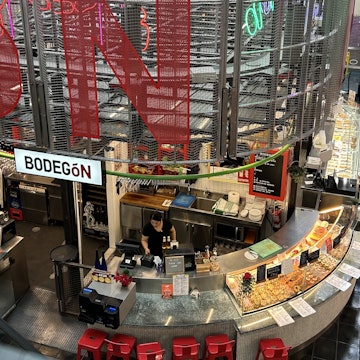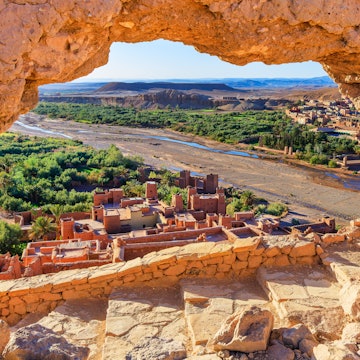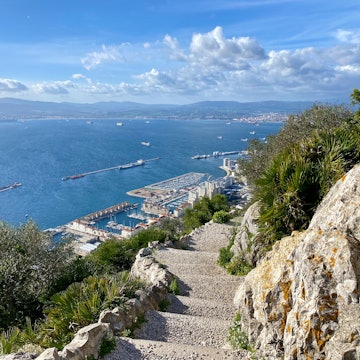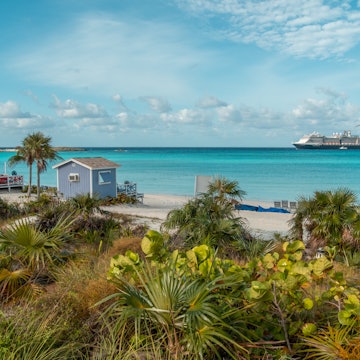

Cathedral of Santa Maria of Palma, also known as La Seu. Felipe Santibañez for Lonely Planet
With a dramatic seaside setting and plenty of Moorish mystery, Palma de Mallorca is instantly alluring.
The city is splashed with Joan Miró’s modernist art; liberally sprinkled with historic palaces in honey-colored stone; adorned with botanical gardens and cafe-rimmed plaças (plazas); and topped off by one of Europe’s most staggering Gothic cathedrals.
Add in a hotter-than-hot food scene, a Spanish passion for parties, 300 days of sunshine and glorious beaches but a pebble-throw away and you are looking at one of the most enticing cities in the Mediterranean.
Where to begin? Perhaps by stuffing a pair of the island’s famous Camper sandals in your suitcase – for this is a city for aimless ambling, full of intricate detail, street life, beauty and banter.
Our first-time guide to Palma de Mallorca gives you a taste of what’s here and helps you piece it all together. Yet you’re bound to find treasures of your own, too.

When to go to Palma de Mallorca, Spain
With year-round flights and each season offering something appealing, there’s no bad time to visit Palma de Mallorca. So when you go will boil down to taste and budget.
Spring and autumn can be gorgeous, with crisp skies, trees in bloom and far fewer crowds than in summer. Warm days average between 20°C (68°F) and 25°C (77°F) – brilliant for getting out and exploring. It’s cheaper and more relaxed to visit during the shoulder seasons, and you should be able to score good deals on flights and room rates. Dates to note include April’s PalmaVela regatta and Semana Santa (Easter) parades, and September’s Nit de l’Art, which cranks up the culture quotient with street art and late-night gallery visits.
In summer, both temperatures (expect highs of up to 35°C/95°F) and visitor numbers soar. Book well ahead, as the best places fill up in a flash. During the July and August school holiday rush, the island is heaving and you’ll want to decamp to the surrounding coves and beach clubs to cool off with dips in the Med.
Summer is peak fiesta time, too, with a flurry of DJ-spun parties, starlit cinema nights and pumping festivals. The biggies to bookmark are in June: the Mallorca Live music festival in nearby Calvià and the unmissable Nit de Foc, with fireworks, bonfires, devils and demons tearing through Parc de la Mar by the cathedral.
In winter, flights slow to a trickle and much of Mallorca shuts up shop – with the exception of Palma. Days can still be mild, with highs of around 18°C (64°F); rates and crowds are low; shopping is a year-round pursuit; and culturally there’s a good buzz, with lots still happening. Seasonal highlights include December’s Christmas market on Plaça Major; high-spirited partying, flaming pyres and fireworks at January’s Fiesta Sant Sebastián; and flamboyant pre-Lenten carnival parades at Sa Rueta and Sa Rua.
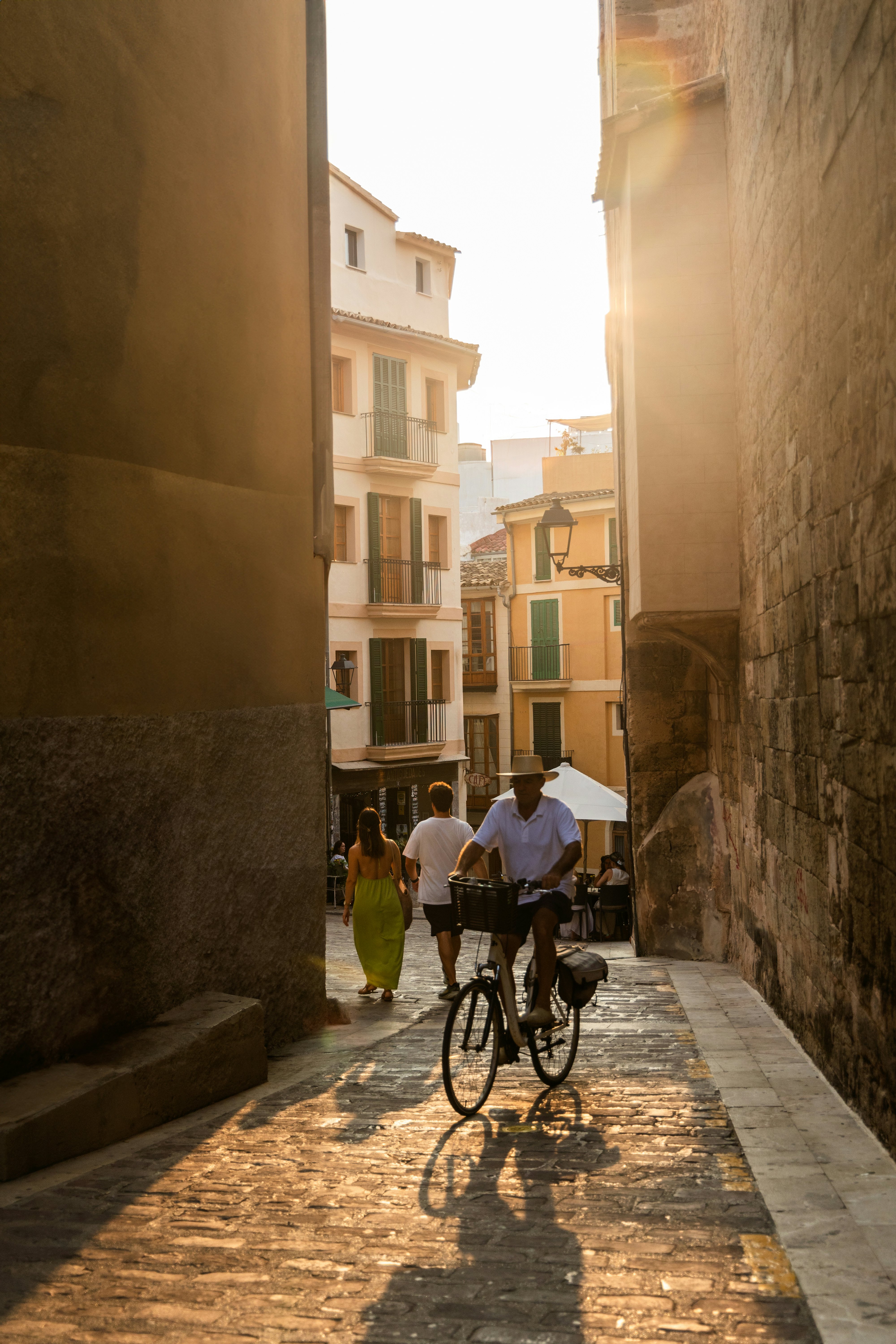
How much time should I spend in Palma de Mallorca, Spain?
A couple of days? Great. A week? Now you’re talking. Palma de Mallorca is often billed as a quick weekend destination or as a springboard for a longer trip around the island. Yet you could devote multiple weeks to getting under the skin of this livable, lovable city.
Five days is long enough if you’re just planning on sticking around the center, giving you ample time to roam the Renaissance-era sea walls, tick off trophy sights like the showstopping Gothic cathedral and galleries like Es Baluard, as well as lose yourself in the tangle of Moorish backstreets, historic patio courtyards, gardens and cafe-rimmed plaças.
But why rush things? With a week or more, you can tie in a few days in Palma with day trips to the surrounding area, maybe hopping aboard a vintage train to rattle through the citrus orchards and ragged limestone peaks of the Serra de Tramuntana to Sóller; driving (by car or on a bus) the rollercoaster MA-10 to the ocher-colored hill towns of the north, like improbably lovely Deià; or chilling out at beaches by the Badia de Palma.

Is it easy to get around in Palma de Mallorca, Spain?
Yes, very. As one of the main holiday hubs in the Mediterranean, Palma is extremely well connected when it comes to flights, with regular direct service to over 100 destinations in Europe. (The city’s airport is Spain’s third-busiest.) All of the big-name budget airlines and car rental agencies operate here. Bus A1 runs very frequently from the airport to the center – a journey of 20 minutes – and on to the ferry terminal.
If you prefer not to fly, you can reach Palma de Mallorca by boat. (And what a way to arrive! The views of the Gothic cathedral rising up above the sea are incredible.) Baleària and Trasmediterránea run a good ferry service between mainland Spain (Barcelona and Valencia) and other Balearic islands including Ibiza and Menorca.
EMT runs a reliable and inexpensive bus service to the airport, port and surrounding towns and beaches. Yet central Palma is compact enough never to need a car or public transport. Indeed, the old town’s cat’s cradle of historic alleys and plaças can only really be seen on foot.
Parking is a pain and bike lanes are everywhere, so it’s more fun to rent two wheels – either a bike or e-bike with Palma on Bike or a vintage Vespa with Vintage Motors. A great way to breeze to nearby beaches is on the coastal bike path between Palma’s port and S’Arenal.
Top things to do in Palma de Mallorca, Spain
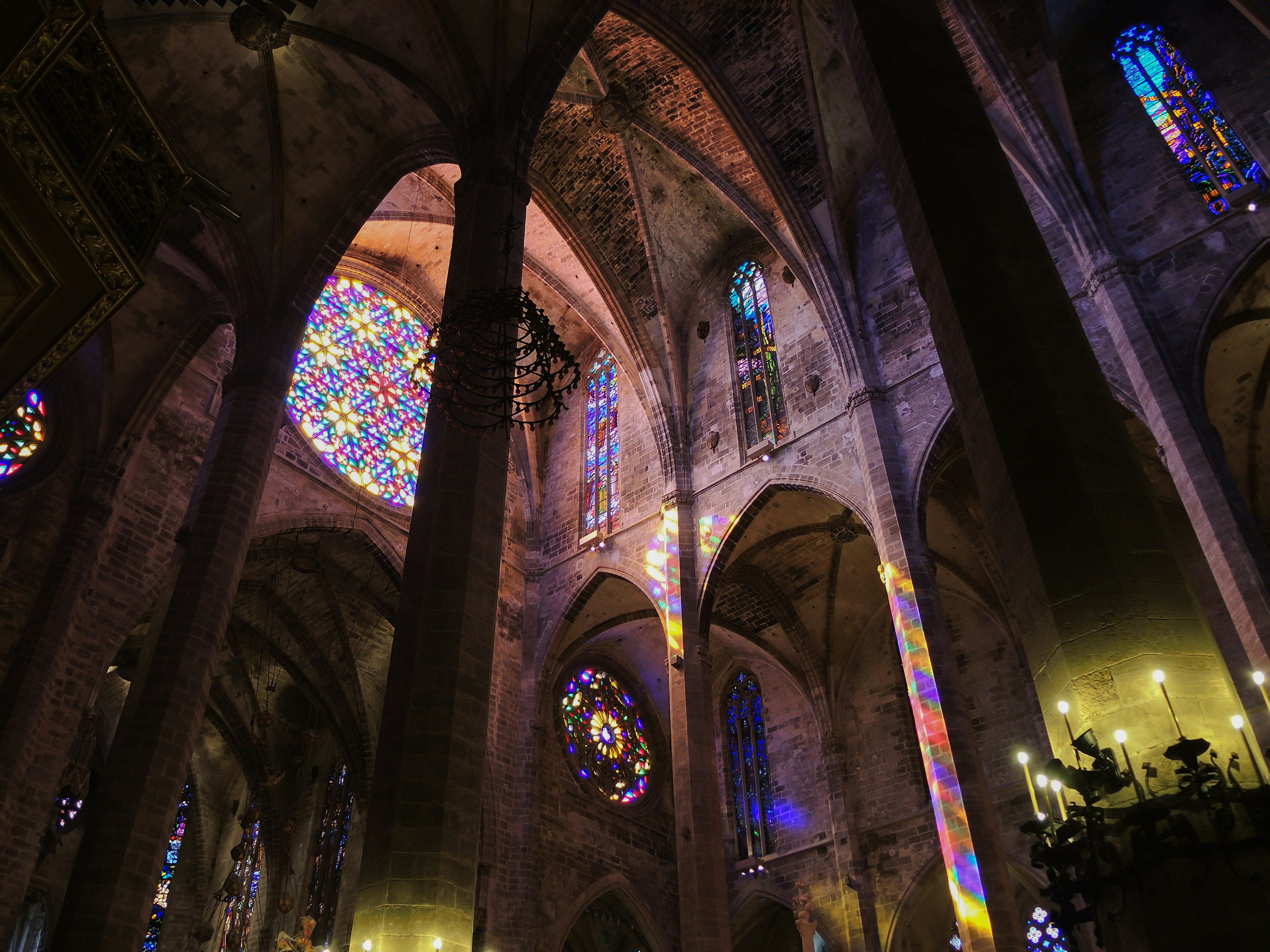
Admire the light inside Palma’s astonishing cathedral
Flinging up above the sea in a riot of golden stone, soaring pinnacles and flying buttresses, Palma’s whopping Gothic cathedral is unmissable – in every possible sense of the word. Get there nice and early to see morning light stream through the rose window (Europe’s largest) and cast rainbow patterns across the vaulted interior, climbing up to the roof terraces for a closer look. Right next door – and just as special – is the Palau de l’Almudaina, originally an Islamic alcázar (fort), converted into a royal residence in the late 13th century, and now the King of Spain’s plush summer digs.
Get lost in the city’s medieval streets
The cathedral is a terrific starting point for nudging deeper into the historic, alley-woven Sa Calatrava quarter of Palma, once the heart of the old medina. Here, you’ll be taken by medieval streets lined with aristocratic townhouses, looming churches like the Gothic Basílica de Sant Francesc and palm-shaded gardens.
Indeed, this slowly savored city really works its magic when you dip down that nameless alley, wander along the sea walls in the blue dusk, or kick back at a cafe with no plan whatsoever.

Soak up beautiful artworks
Top billing for art lovers goes to Es Baluard, built into the fortifications of the city’s 16th-century sea walls, which wows with a permanent collection showing works by Miró, Barceló and Picasso. Hot on its heels is Museu Fundación Juan March, lodged in a beautiful 17th-century mansion, which zooms in on contemporary masterpieces of the Miró, Picasso, Dalí and Eduardo Chillida ilk.
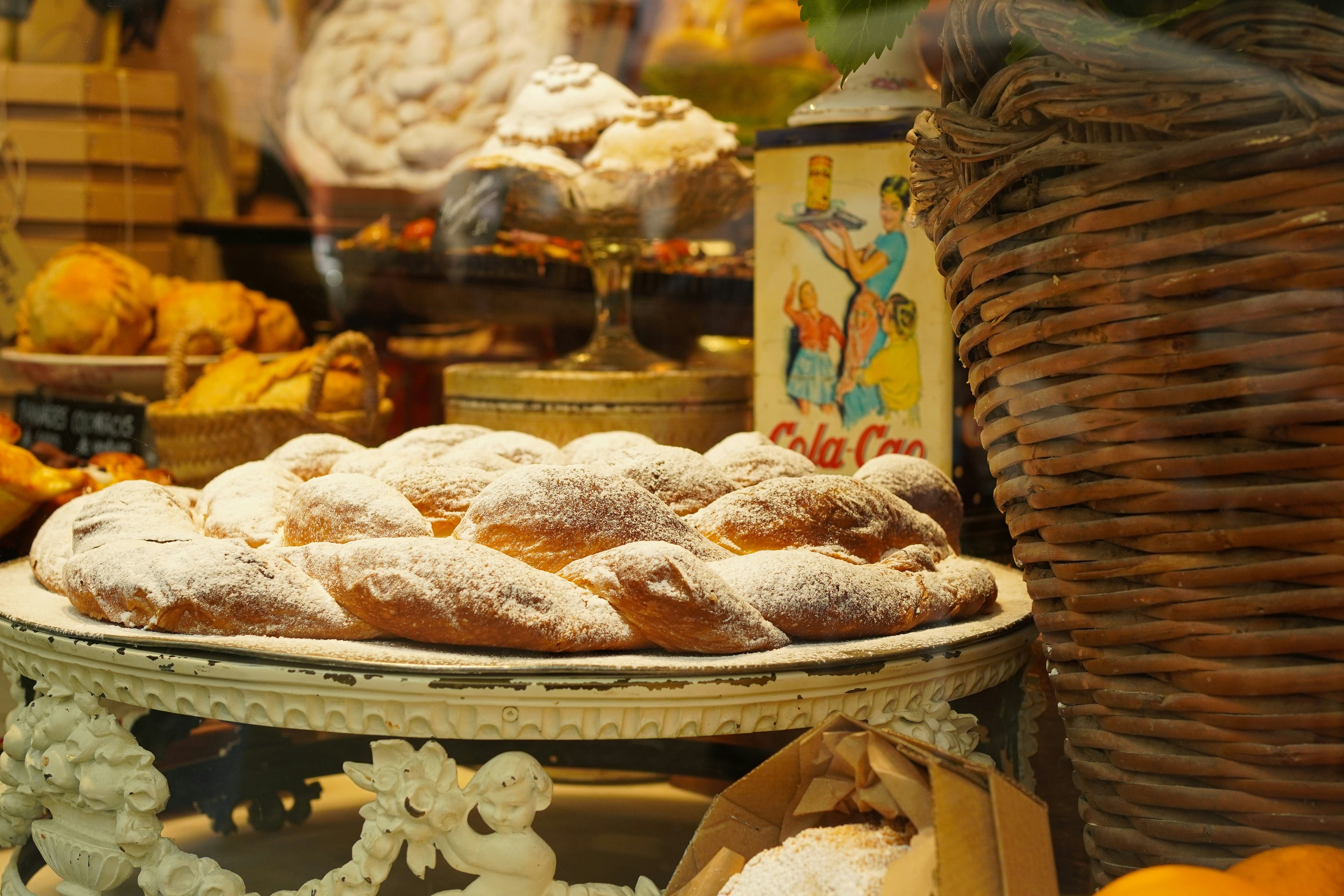
Eat...and eat again
Palma de Mallorca’s increasingly exciting food scene has made it one to watch. For a feast of island produce (cheese, fish, meat, fruit and veg, plump olives, wafer-thin jamón serrano – you name it) and tapas and oysters on the hoof, graze your way around atmospheric Mercat de l’Olivar. In a former 17th-century convent, Michelin-starred March Fosh is the table to book well ahead. Look forward to imaginative riffs on clean, bright Balearic flavors.
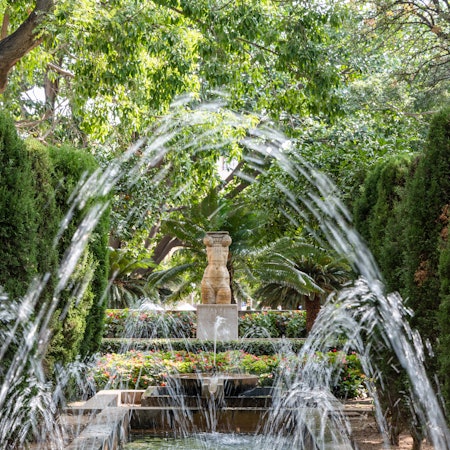
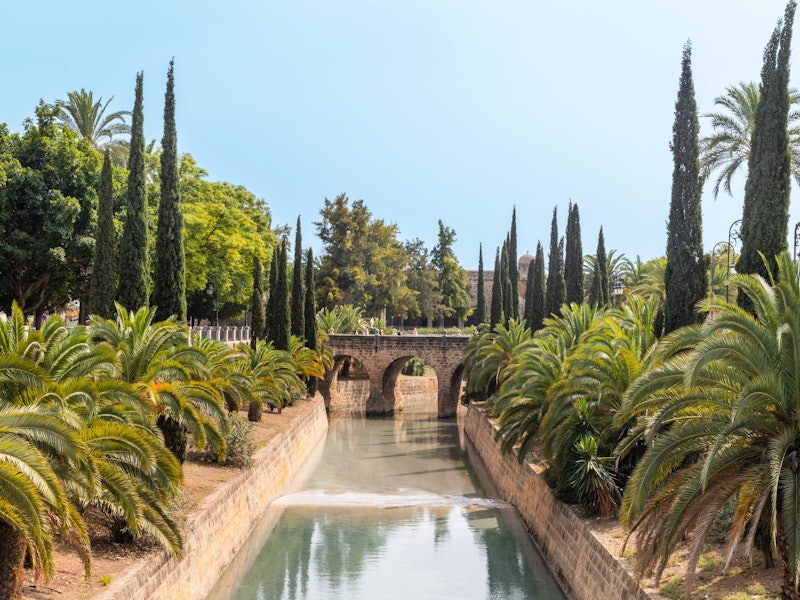
My favorite things to do in Palma de Mallorca, Spain
Seeing the morning light stream through the rose window and cast rainbows across Palma’s resplendent cathedral is a scene I’ll never forget. But my ideal time to appreciate the cathedral in all its Gothic grandeur and ocher-stone beauty is while everyone is still asleep. I love getting up in the pink of sunrise for a run along the waterfront – through the fountain-splashed Parc de la Mar and on along the Renaissance ramparts, Dalt Murada, as the first light dances on the sea.
As the city begins to wake up, I might go for a cortado (espresso topped with warm milk) and ensaïmada (Mallorca’s featherlight, snail-shaped pastry) at time-warp bakery-cafe Ca’n Joan de s’Aigo in Carrer Can Sanç.
In terms of looks, Palma is a knockout. Yet it’s the city’s laid-back beat and rich history that truly grab me. One of my all-time favorite ways to spend a couple of hours is by wandering through the tightly packed alleys in the old Moorish quarter, diving into lanes like Carrer de la Portella, Carrer de la Puresa and Carrer de Ca’n Angluda to alight upon patis (patios), hidden courtyards with ornately carved stonework, columns and foliage. With its palm, pomegranate and citrus trees, Jardí del Bisbe makes a shady botanical escape from the crowds, while the Banys Àrabs baths and gardens recall the island’s fascinating Muslim heritage.

How much money do I need for Palma de Mallorca, Spain?
Budget-wise, Palma is on par with many destinations in the Mediterranean. How much you spend depends on the trip you have in mind – you’ll find everything here from no-frills hostels to sweet, simple guesthouses to five-star boutique hotels with all the deluxe suites and infinity-pool trimmings. You can save euros on flights and room rates by visiting in the low and shoulder seasons.
Restaurants also run the full spectrum. If you want to economize, grab breakfast in one of the city’s bakeries and check out the menú del día (fixed lunch menu), where you’ll often get three courses for as little as €15 (US$17.40). Not all sights charge entry, so there’s plenty here you can do for free.
Average daily costs in Palma de Mallorca
Boutique hotel room for two: from €200 (US$232)
Dorm bed in a hostel: from €30 (US$35)
Self-catering apartment: from €100 (US$116)
Car rental: from €40 (US$46) per day for a small car
Dinner for two at a top restaurant: €80–100 (US$93–116)
Coffee and an ensaïmada: €3.50 (US$4.06)
Menú del día lunch: €15–20 (US$17.40–23.20)
Beer: €3.50 (US$4.06)
Gallery or museum entrance: €6 (US$7)
Bus tickets to nearby towns and beaches: €2–5 (US$2.32–5.81)
Bike rental: €10 a day (US$11.61)
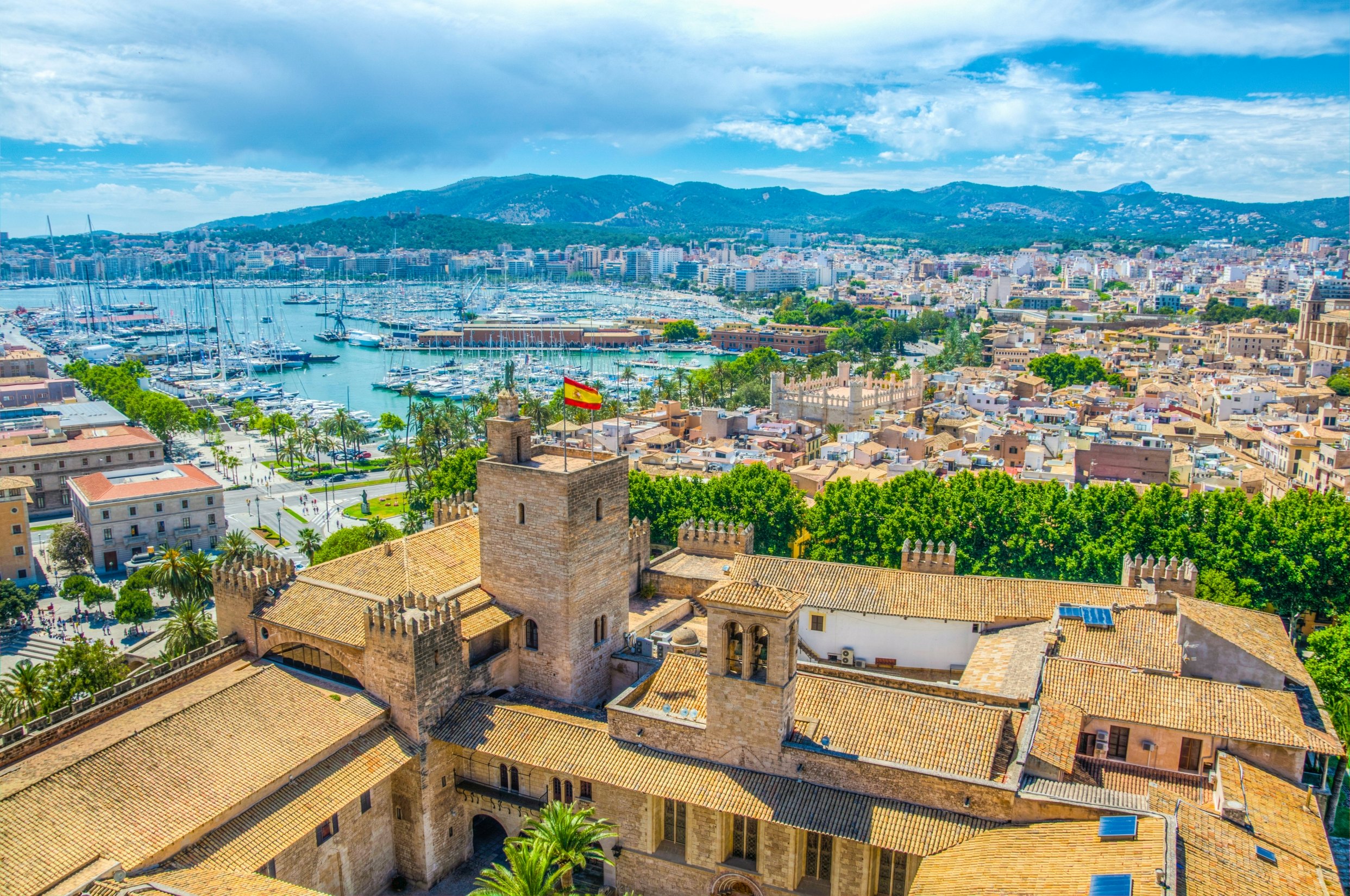
Don’t skip Palma’s many rooftops
The most impressive views and photo ops are from the roof terraces that pop up above Palma; time things right and you’ll catch a fiery sunset. There are uplifting views reaching out across the city to the brilliant blue band of the sea from the cathedral rooftop, if you’re willing to stomp up 280 steps. Sitting astride a wooded hillside, the Castell de Bellver, a 30-minute bus ride west of town, entices with views reaching across woods to Palma, the Badia de Palma and out to sea.
If you’d prefer to see city and sea twinkle with an expertly mixed cocktail in hand, head to one of the city’s many rooftop bars, including favorites like the Sky Bar at Hostal Cuba and Nakar rooftop bar.
What to pack when visiting Palma de Mallorca
Avoid the tendency to over-pack – all you’ll need really, are light, floaty layers; flat shoes or sandals (for historic cobbles and seafront strolls); swimwear and towel (for days at the beach); and sun hat, sunglasses and sunscreen. The vibe is casual island chic even in the smartest of places. In the cooler days of autumn and winter, you might want to throw in a warm fleece and waterproof layer.








